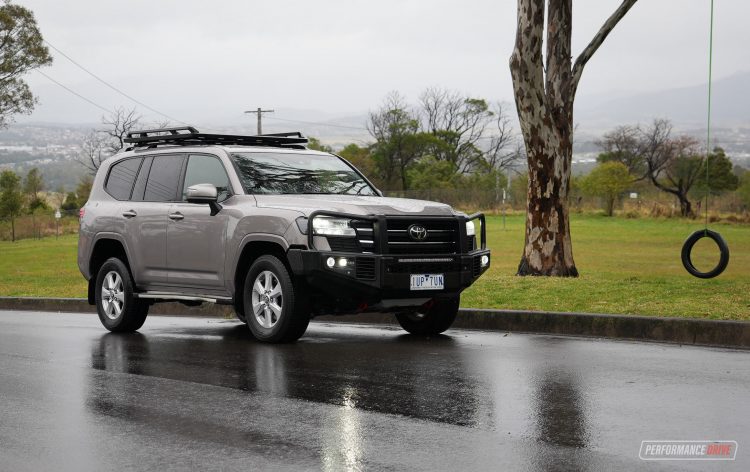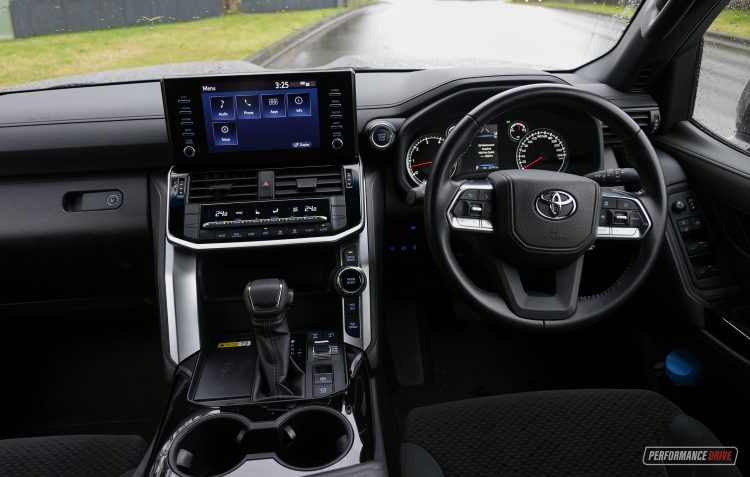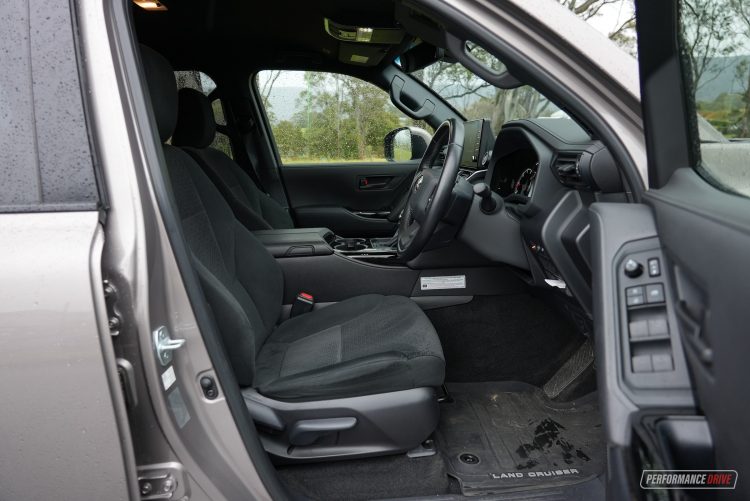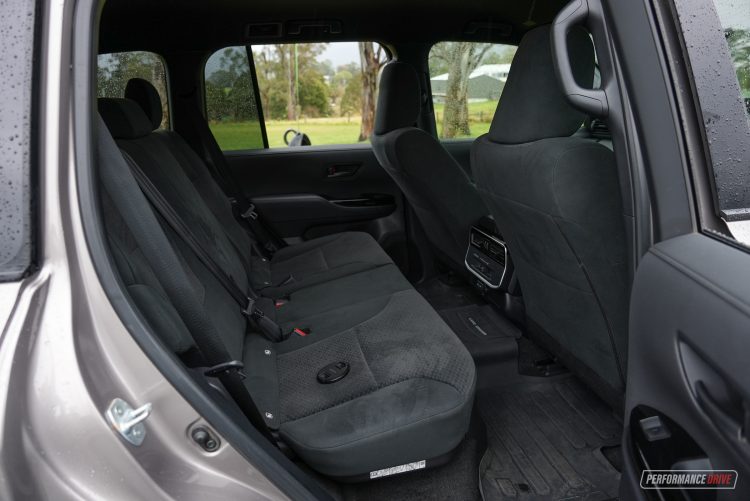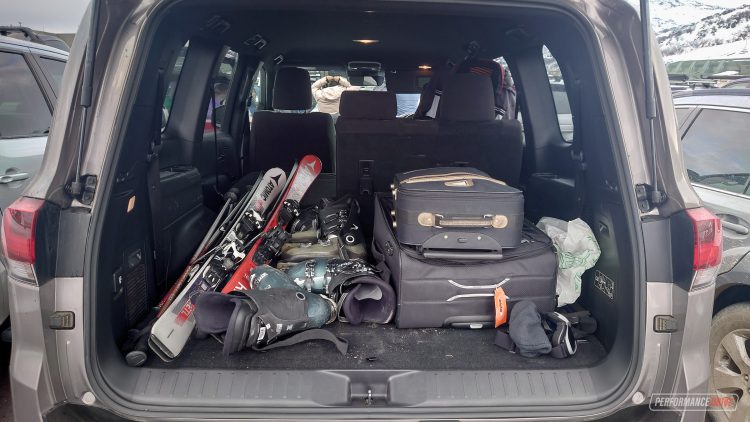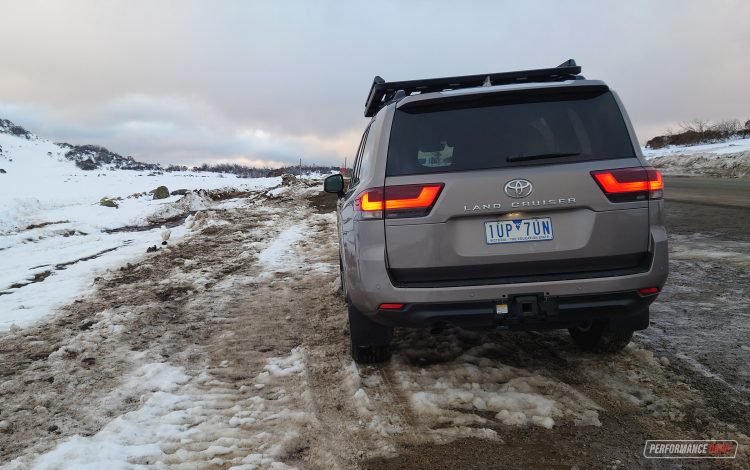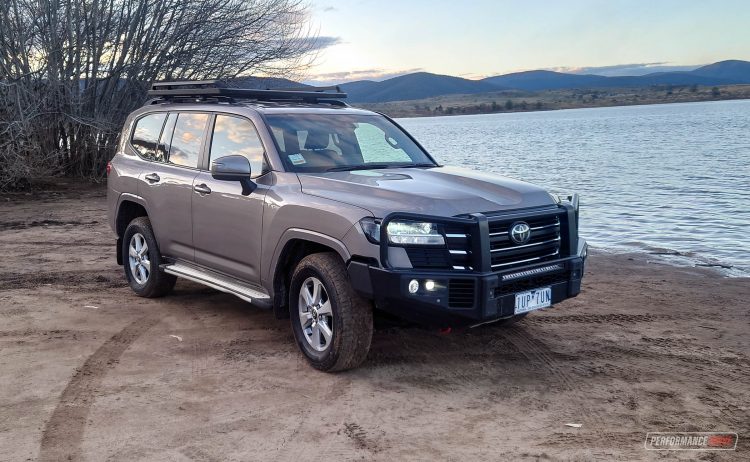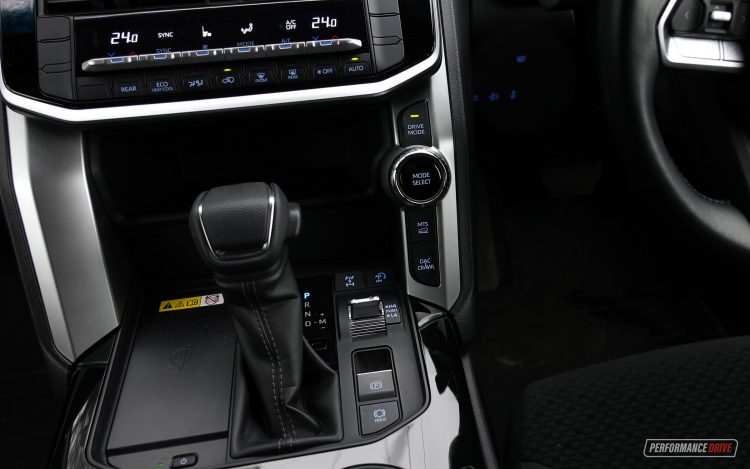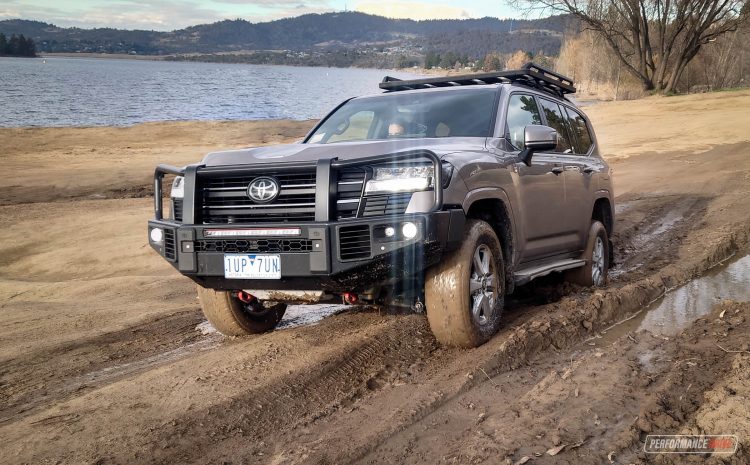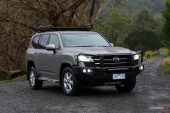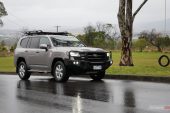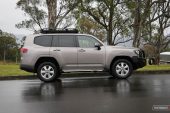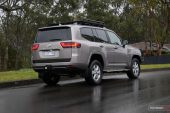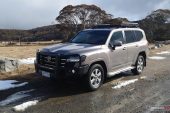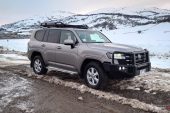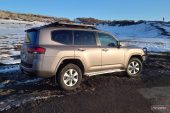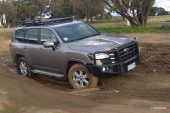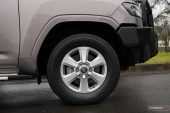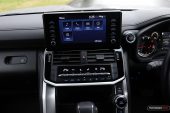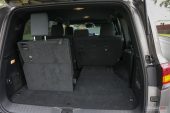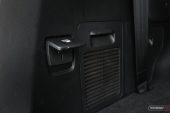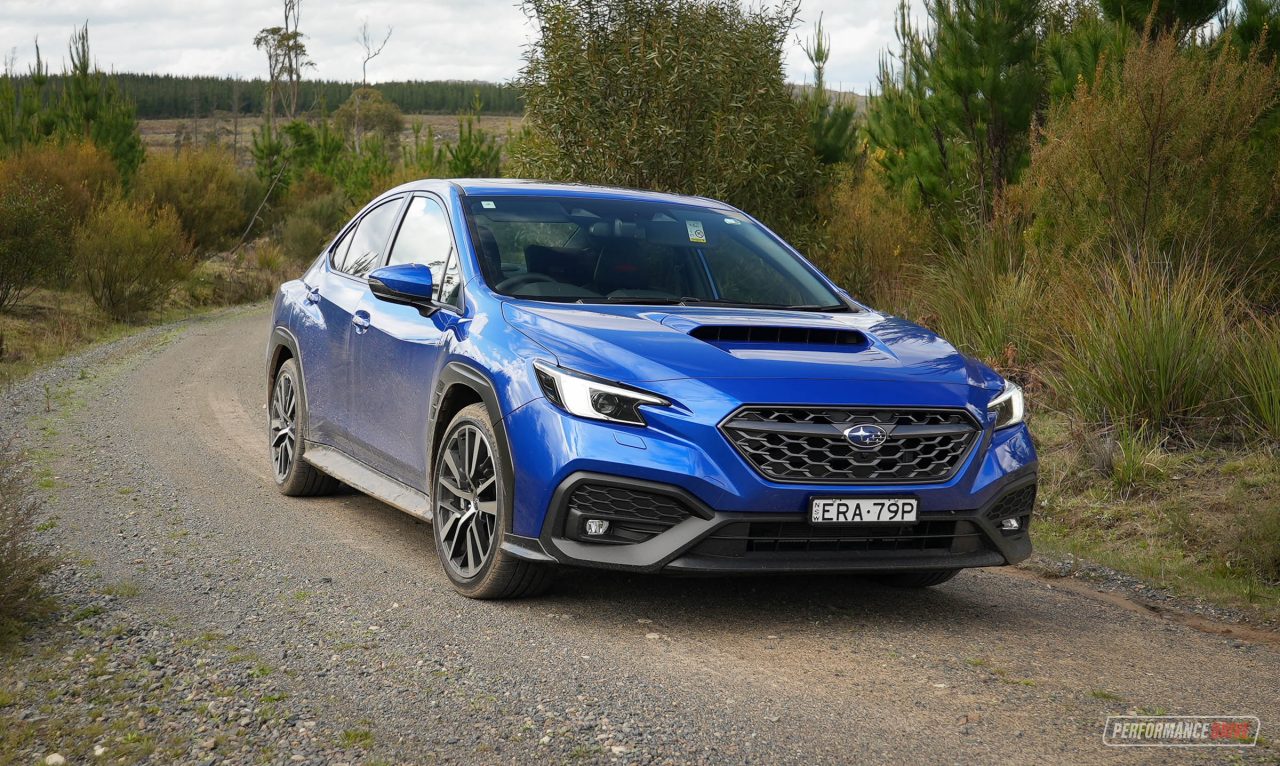It’s been a slower-than-expected start for the highly anticipated Toyota LandCruiser 300 Series in terms of VFACTS figures. Not necessarily because it is not liked, but because it has suffered from production and delivery delays worldwide. Through October 2022, 10,131 units have been sold. Down from the 13,380 units sold in the same period in 2021, when everyone was going crazy over the 200 Series.
The 300 Series LandCruiser is a complicated one for Toyota Australia, as the nameplate enjoys a loyal following that is also one the most sensitive to change. Whether enthusiasts like it or not, the 300 Series required major changes to its typical formula to comply with stricter emissions and safety standards.
Significant changes included the replacement of the old V8 with a new 3.3-litre twin-turbo V6 diesel engine, a 10-speed auto transmission, a new platform and exterior using the Toyota New Global Architecture (TNGA-F), and lots of driver assistance features added in.
We also saw two new variants joining the prevailing four; the GR Sport and Sahara ZX. They sit above the GX, GXL, VX and Sahara in price. Here, we’re testing the GXL by taking it on a popular Aussie journey, to the NSW Snowy Mountains.
Prices for the GXL start from $100,981 (excluding on-road costs). Our test vehicle was also fitted with a genuine Toyota bull bar and roof basket. There is a huge suite of official accessories you can add to make your LandCruiser even more handy.
2022 Toyota LandCruiser GXL – THE SPECS
[column width=”47%” padding=”6%”]Engine: 3.3-litre twin-turbo V6 diesel
Output: 227kW@4000rpm / 700Nm@1600-2600rpm
Transmission: 10-speed auto
Drive type: Four-wheel drive, centre diff lock
Wheels: F & R: 18×7.5, 265/65
ANCAP: Five stars
Tare weight: 2495kg
Power-to-weight: 10.99:1 (kg:kW)
Official fuel economy: 8.9L/100km
Economy during test: 11.3L/100km[/column] [column width=”47%” padding=”0″]Fuel capacity/Type: 110L/Diesel
Power efficiency: 25.50kW:L/100km
0-60km/h: 3.56 seconds*
0-100km/h: 7.43 seconds*
60-110km/h: 5.08 seconds*
1/4 mile: 15.41 seconds at 147.1km/h*
Max acceleration: 0.802g
100-0km/h braking: 3.47 seconds at 43.95 metres*
Max deceleration: -1.024g
Decibel at idle: 48*
Peak decibel at 60-100km/h: 82*
Priced from: $100,981[/column][end_columns]
* Figures based on recently tested 2022 GX model as tested by PerformanceDrive on the day. Factory claims may be different
2022 Toyota LandCruiser GXL – THE PACKAGE
Unlike yesteryear, all variants are fitted with a vast list of safety tech to comply with modern safety standards. As standard, you get forward collision mitigation with pedestrian avoidance and braking, distance-controlled cruise control (including low-speed off-road cruise), auto headlights with auto-dipping high beam, LED headlamps and taillamps, lane departure warning with active lane keeping aid, road sign recognition, an electric park brake, and height adjustable front seats.
The GXL also comes with proximity keyless entry with a starter button, a six-speaker stereo with Bluetooth, digital radio, Android Auto and Apple CarPlay, dual-zone climate control, third row seating, LED front fog lamps, heated exterior mirrors, rear privacy glass, aluminium side steps, painted lower door mouldings, roof rails, rear cross-traffic alert, front and rear parking sensors, multi-terrain off-road modes, four more USB charging ports, and a wireless charging pad.
For its $100k price tag, we believe it should at least come with rain-sensing wipers, a second-row centre armrest, driver and passenger seatback pockets, the bigger 12.3-inch centre touch-screen of upper variants and bigger 7.0-inch cluster display, and sat-nav. You need to upgrade to higher models to get these.
Toyota has done an admirable job in keeping the new-look exterior looking strong in a more modern way. Some design elements have trickled through from the last model, like the dual bulge bonnet, flared door shoulders, and the general silhouette shape of a tough, dependable, large SUV.
Stepping inside and you notice the LandCruiser has retained its hard-wearing feel, but in a contemporary looking way. Materials and grip points feel as solid as they come. And the space overall is quick to navigate with its sensible layout. Obviously, the room around feels enormous. Headroom, hip room, leg room are all plentiful for five adults. Even the third row is generous.
In the GXL, you get the same fabric seats seen in the base model GX. They provide decent levels of comfort and nominal bolstering so bigger passengers won’t feel locked in place. The fabric is refreshing to feel as it doesn’t burn you in the heat, nor give you a chill in the cold like leather does.
Although you get a confident high-riding feeling in the driver’s seat, the aluminium bonnet retains those two bulging contours. They could be irritating for shorter drivers as they may impede on your forward vision.
Because the GXL comes with third row seating, boot space drops from 2052 litres to 1967 litres over the GX. But don’t worry, it is still enormous – plenty of room to throw the family’s skis and gear for the slopes.
Servicing intervals are required more often than the norm, at 10,000km or every six months. Toyota offers capped-price servicing, and warranty lasts for five years and for an unlimited number of kilometres within that period.
2022 Toyota LandCruiser GXL – THE DRIVE
Sadly, for many, the hefty V8 engine had to go. Fuel economy and emission standards now set the path. Luckily, Toyota has made the switch sufferable by adding 27kW more power and 50Nm more torque from the smaller 3.3-litre twin turbo diesel V6 engine. You cannot beat the brute force of a V8 engine, but it cannot beat the 0-100km/h sprint in the new V6.
We didn’t test this GXL but we have tested the GX, the GR Sport and the Sahara ZX across the usual sprints with our Vbox. The best results for 0-100km/h were 7.43 seconds, 7.75 seconds, and 7.61 seconds, respectively.
The new V6 also feels more agile and willing to rev. When you press your foot down it rushes ahead with confidence. It also has enough torque to hold onto higher gears like it did in our long ascent into the Snowy Mountains National Park. Proceeding up the long and windy road felt effortless.
The new 10-speed auto gearbox makes acceleration feel a little different to what we were expecting. When driven steadily, it tends to slip the torque converter or drift between the ratios a lot. It is probably programming biased towards economy, and because there are now so many gears. Thankfully, planting the accelerator down swiftly makes everything hop to action with haste and savagery. There is no option for a manual gearbox.
Diesel particulate filters have been contentious technologies for diesels and Toyota in the past. To alleviate this, the 300 Series is fitted with a DPF gauge and a manual regeneration button for those who might not get a chance to drive in the manner that automatically activates the regeneration cycle. It is very transparent, and gives you back control of your LandCruiser. DPFs need to activate a regeneration cycle frequently, and usually at highway speeds, so the filter does not clog up.
Turning to the all-important fuel consumption, and the results tell an unexpected story. The new V6 engine’s official average has only improved by a meagre 0.6L/100km compared to the previous V8 engine. Then the ‘urban’ fuel figure that uses the same ADR81/02 measuring standard, remains almost the same as the V8 engine – 11.3L/100km. This means when driven around the suburbs with more frequent stops and starts, the new engine is not any more frugal than the old engine.
During our time with the GXL on the freeways and chugging up and down the ski slopes, we averaged 11.3L/100km. There is room for improvement when you compare it with other SUVs with similar performance figures and engines. If it’s all about emissions, its average has decreased by 15g/km to 235g/km.
One item that enthusiasts will surely niggle with is a smaller fuel tank across all variants. It has reduced from 138 litres to 110 litres. Not good for rural buyers who depend on long-range driving. Though, it does help to reduce overall weight. The theoretical average range, based on the official consumption, is 1236km. The old GXL V8 offered 1453km.
In terms of off-road performance, the LandCruiser continues to dominate with its outstanding rugged credentials. For example, you get low range gearing, low speed off-road cruise control, downhill assist control, hill-start assist control, multi-terrain selections, and crawl control. Ground clearance has increased to 235mm (previously 230mm), and approach and departure angles remain relatively unchanged, at 32 and 25 degrees respectively. Basically, the LandCruiser feels like it is completely unencumbered by any obstacle or terrain. It just keeps pushing on, over or through.
On top of its sheer size and weight, the new TNGA-F ladder-type chassis with a live-axle rear end results in some expected lean and understeer among fast cornering. Tyre roar also comes to play too. Especially around the curvy roads of the NSW Snowy Mountains. Only natural from such a hefty beast that’s so capable off the road.
2022 Toyota LandCruiser 300 Series – THE VIDEOS
2022 Toyota LandCruiser GXL – THE VERDICT
During our extended time with the LandCruiser GXL, it allowed us to realise the tricky balance Toyota has maintained. The 300 Series is certainly more up to date, while not putting too many loyal customers’ noses out of joint with unwanted changes. The rewards are plentiful for prospective buyers. You get more power, better fuel economy, lower emissions, continued off-road performance, and many important safety features all drivers should be surrounded by. It’s also a lot more refined and equipped with more advanced technologies than ever before.
The only thing you don’t get is a similar price tag. Like with everything these days, prices have increased across the range. Nonetheless, if you can still afford it, we still consider the LandCruiser as one of the most solid and capable 4x4s you can buy. Let alone one that can take the whole family and tow a 3500kg braked trailer.
[column width=”47%” padding=”6%”]PROS:
– Capability off-road and array of off-road tech
– New V6 engine is more powerful, quicker, and more economical than old V8
– Huge and strong interior
– DPF control and transparency
– GXL is the ideal sweet spot between price and hard-working capability[/column] [column width=”47%” padding=”0″]CONS:
– 10-speed auto feels a little disconnected and indecisive at times
– High price tag
– Long delivery wait times[/column][end_columns]
As always, if you’re thinking about buying a new car don’t forget to click here to speak with our car buying specialists.
